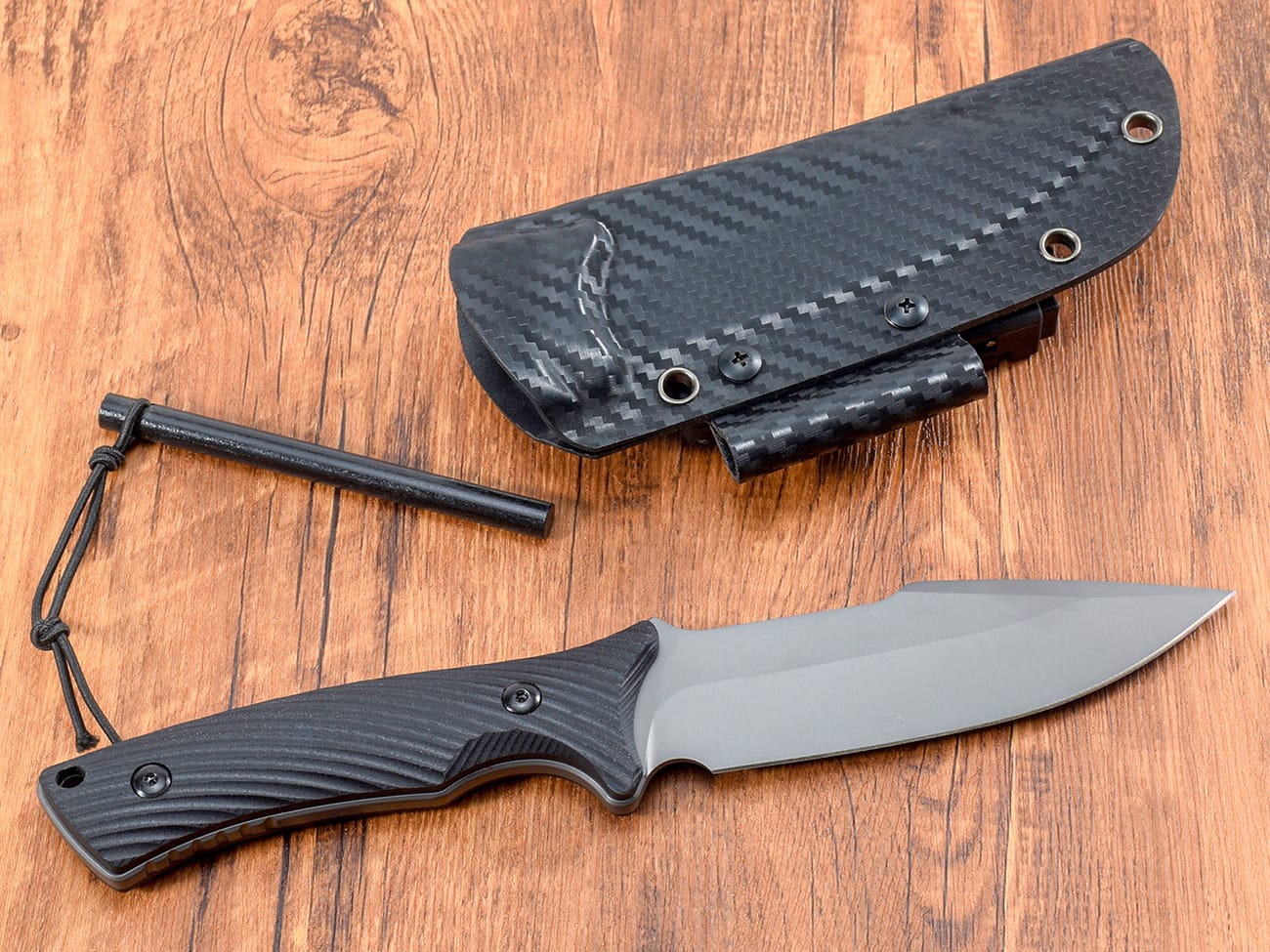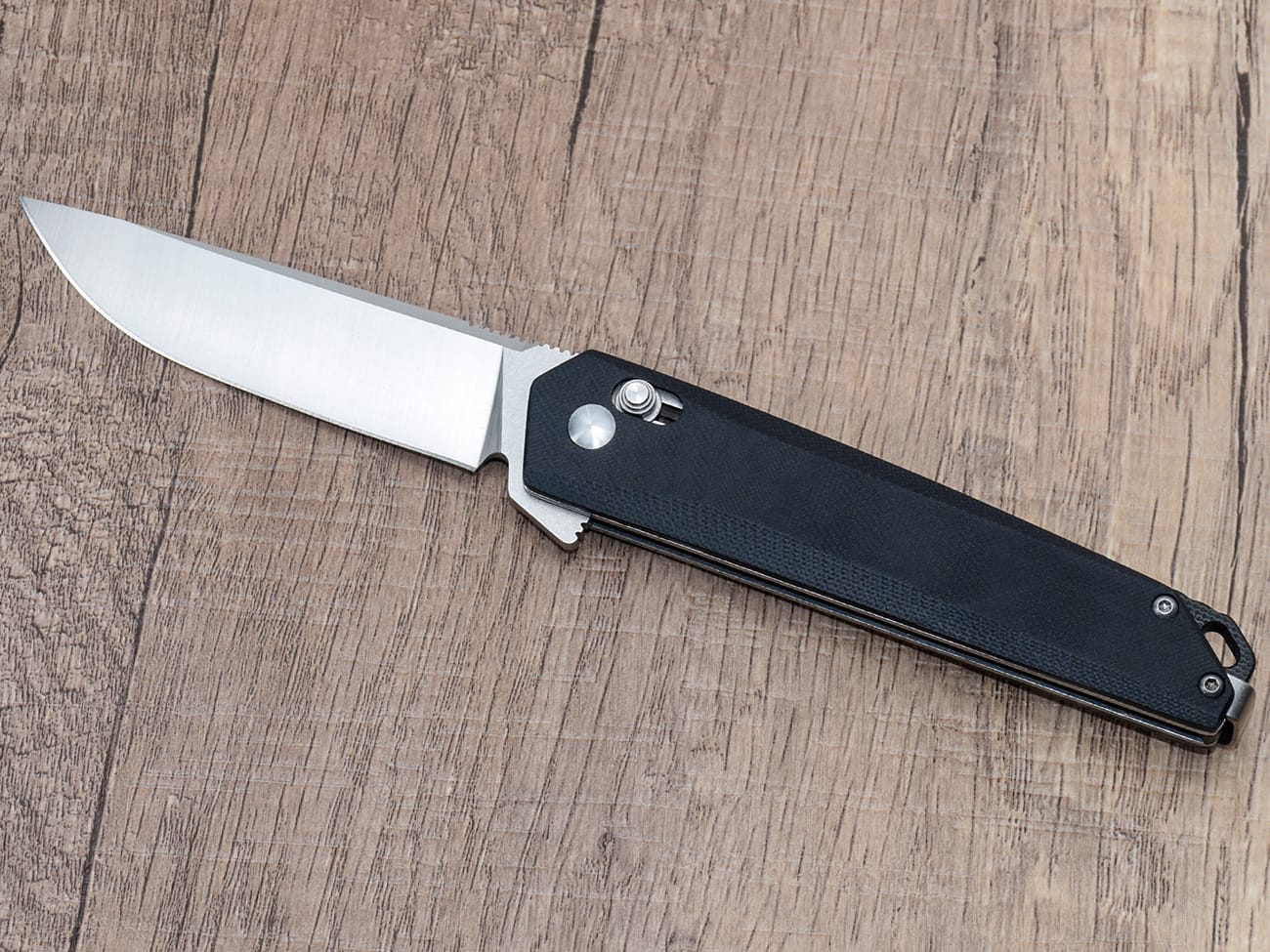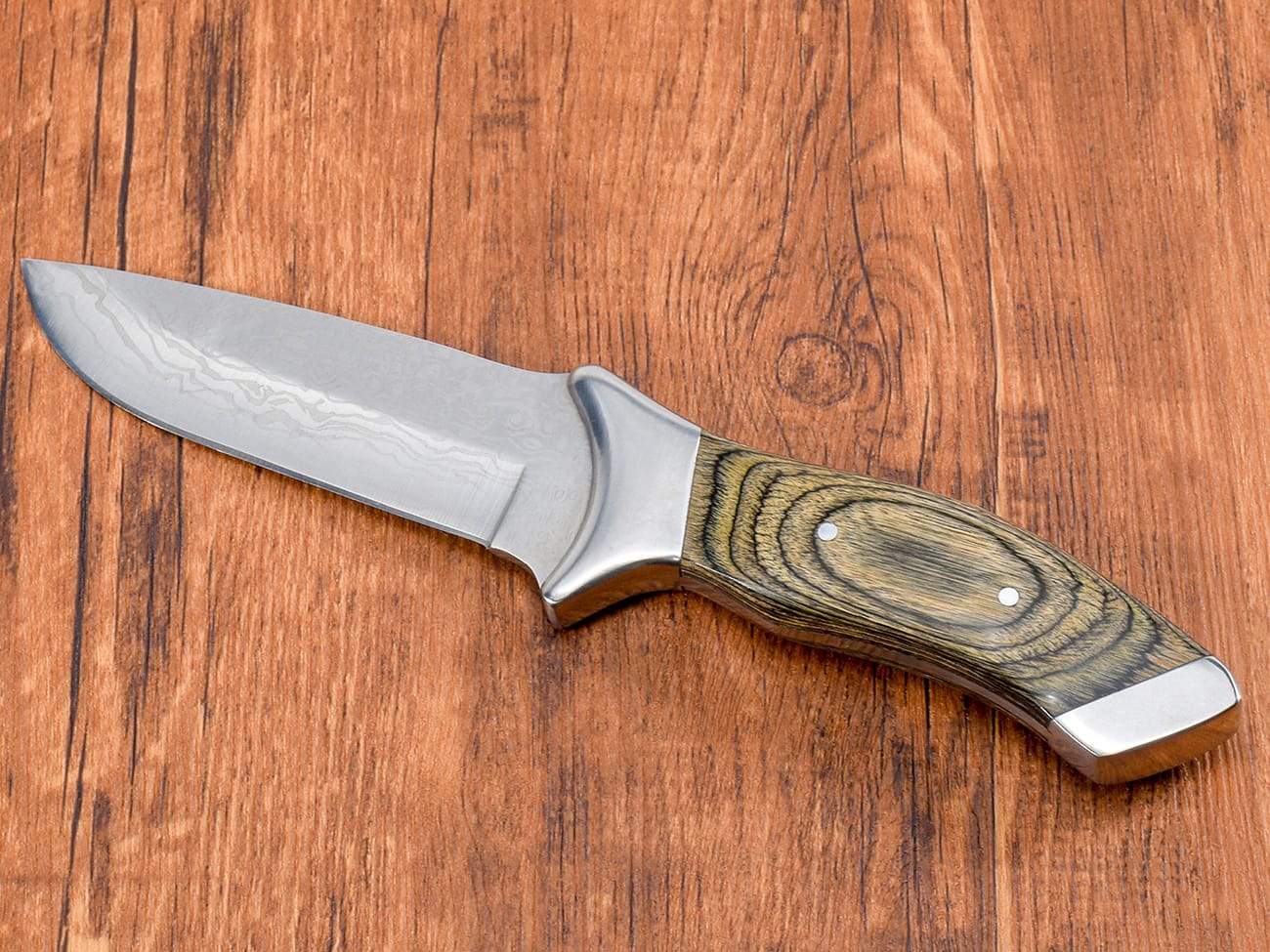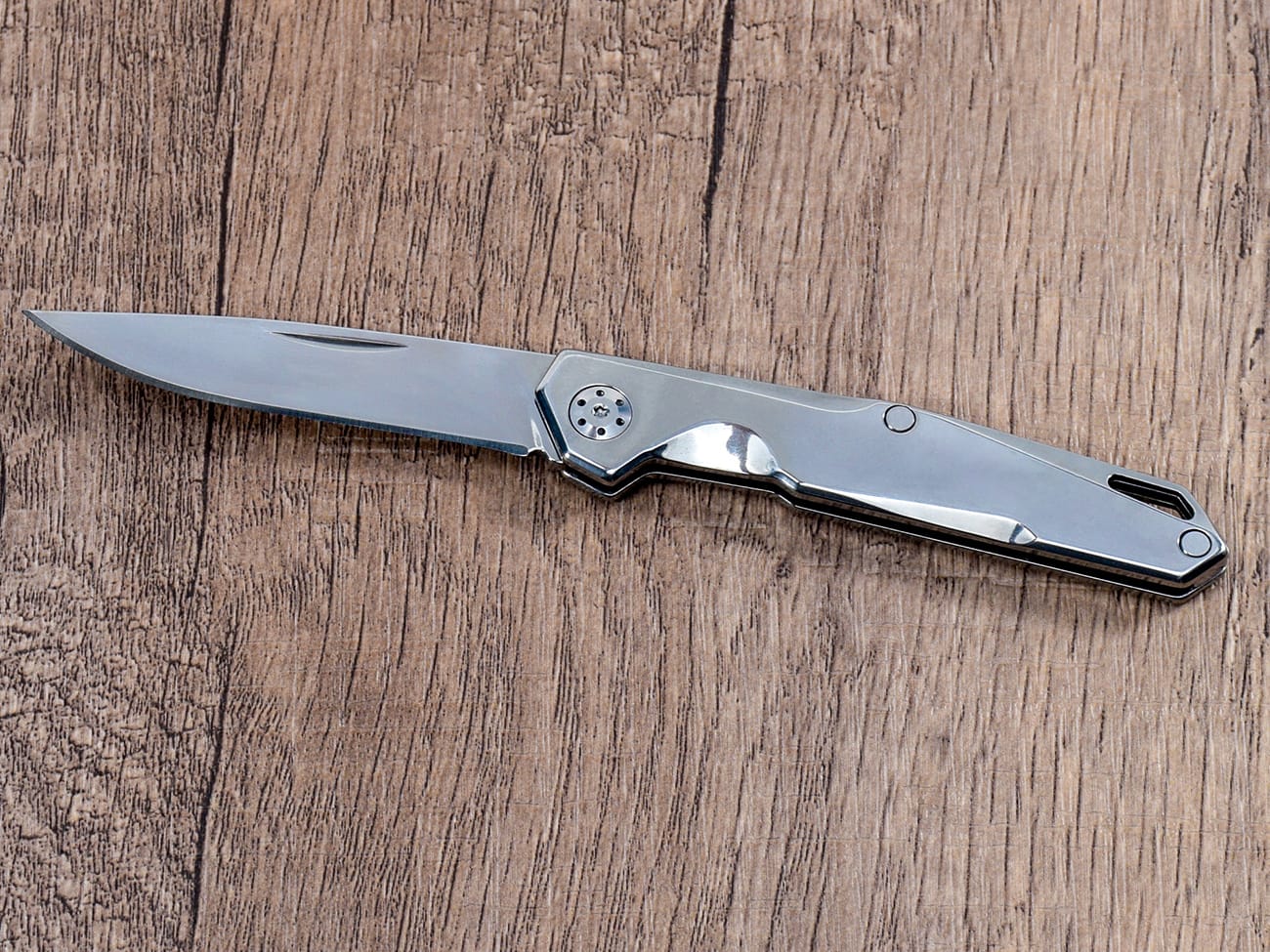When it comes to choosing the best survival knife, one crucial factor often overlooked is blade thickness. The thickness of your survival knife can significantly impact its performance in various bushcraft and survival situations. In this comprehensive guide, we’ll explore the optimal thickness for a survival knife and why it matters. Whether you’re a seasoned outdoorsman or just starting your bushcraft journey, understanding knife thickness will help you make an informed decision for your next adventure.
Why Does Survival Knife Thickness Matter?
Before diving into the specifics, it’s essential to understand why blade thickness is a critical consideration for a survival knife. The thickness of your knife affects its:
- Strength and durability
- Cutting ability
- Weight and portability
- Versatility in various tasks
Let’s explore these factors in detail to help you choose the perfect survival knife for your needs.
What is the Ideal Thickness for a Survival Knife?
The ideal thickness for a survival knife typically ranges from 3/16 inch (4.8mm) to 1/4 inch (6.4mm). However, this can vary depending on the specific use and personal preference. Let’s break down the pros and cons of different thicknesses:
Thin Blades (1/8 inch or 3.2mm and under)
Thin blades excel at slicing and detailed work but may lack the strength needed for heavy-duty tasks.Pros:
- Excellent for precision cutting and food preparation
- Lighter weight for easy carrying
- Better for skinning game
Cons:
- More prone to bending or breaking under stress
- Less suitable for batoning or prying tasks
Medium Thickness (3/16 inch or 4.8mm)
This is often considered the sweet spot for many survival knives, offering a good balance of strength and cutting ability.Pros:
- Versatile for a wide range of tasks
- Strong enough for moderate batoning
- Still maintains good cutting ability
Cons:
- May be too thick for some precision tasks
- Slightly heavier than thinner blades
Thick Blades (1/4 inch or 6.4mm and above)
Thick blades offer maximum strength but can sacrifice some cutting ability.Pros:
- Extremely durable and resistant to breaking
- Excellent for heavy-duty tasks like chopping and batoning
- Can be used for light prying in emergencies
Cons:
- Heavier to carry
- Less efficient for slicing and detailed work
- May be overkill for many everyday tasks
How Does Blade Thickness Affect Survival Knife Performance?
Understanding how blade thickness impacts various survival tasks can help you choose the right knife for your needs. Let’s examine some common bushcraft activities and how thickness plays a role:
Batoning Wood
For splitting wood, a thicker blade (3/16 inch to 1/4 inch) is generally preferred. The extra thickness provides the necessary strength to withstand repeated impacts without bending or breaking. However, keep in mind that extremely thick blades may be harder to drive through wood.
Carving and Whittling
Thinner blades (1/8 inch to 3/16 inch) are better suited for detailed carving work. They offer more control and precision, making it easier to create intricate designs or craft small objects in the field.
Food Preparation
A medium thickness (around 3/16 inch) often works well for food prep tasks. It provides a good balance between slicing ability and durability, allowing you to handle both soft and hard foods with ease.
Skinning Game
For skinning animals, a thinner blade (1/8 inch to 3/16 inch) is usually preferred. The reduced thickness allows for smoother, more precise cuts, minimizing the risk of puncturing the hide or damaging the meat.
Chopping
When it comes to chopping small branches or vegetation, a thicker blade (1/4 inch or more) excels. The added weight and strength of a thick blade make it more efficient for these tasks, requiring less effort from the user.
What Other Factors Influence Survival Knife Thickness?
While thickness is important, it’s not the only factor to consider when choosing a survival knife. Other elements that work in conjunction with blade thickness include:
Blade Steel
The type of steel used in your knife can affect how thick it needs to be. High-quality steels like 1095 or D2 may allow for slightly thinner blades without sacrificing strength.
Blade Grind
The grind of your knife (e.g., flat grind, scandi grind, or convex grind) can impact its performance at different thicknesses. For example, a convex grind can help maintain strength in a thinner blade.
Tang Construction
A full tang knife generally offers more strength and durability, which may allow for a slightly thinner blade without compromising overall robustness.
Handle Material
The material used for the handle can affect the knife’s balance and how it feels in hand at different blade thicknesses. G10 and Micarta are popular choices for their durability and grip.
How to Choose the Right Thickness for Your Survival Knife?
Selecting the ideal thickness for your survival knife depends on several factors:
- Intended Use: Consider the primary tasks you’ll be performing with your knife. If you’re focused on heavy-duty work, lean towards a thicker blade. For more general use, a medium thickness may be best.
- Environment: Think about where you’ll be using the knife. Humid environments may require thicker blades to resist corrosion, while drier climates may allow for thinner blades.
- Personal Preference: Some users prefer the feel of a thicker, more substantial knife, while others prioritize lightweight gear. Choose what feels comfortable for you.
- Skill Level: Beginners may benefit from a slightly thicker blade for added durability, while experienced users might prefer a thinner blade for increased versatility.
- Complementary Tools: If you carry other tools like a hatchet or saw, you may not need an extremely thick knife for heavy-duty tasks.
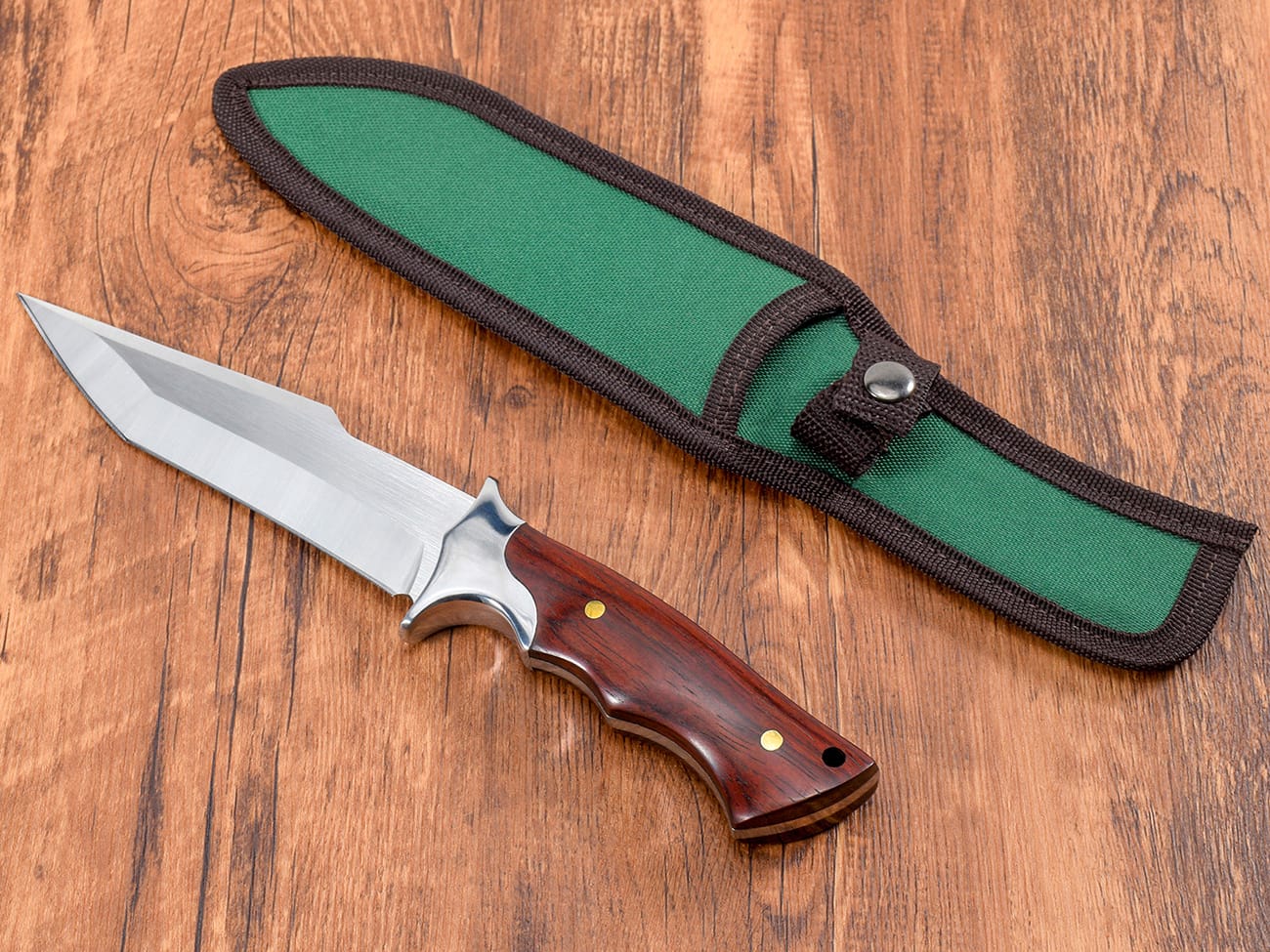
A custom 8cr13mov steel fixed blade knife with a wooden handle, showcasing a balanced blade thickness suitable for various survival tasks.
Frequently Asked Questions About Survival Knife Thickness
Is a thicker blade always better for a survival knife?
Not necessarily. While thicker blades offer more strength, they can be less versatile for detailed tasks. The best thickness depends on your specific needs and intended use.
Can a thin blade be strong enough for survival tasks?
Yes, with proper design and high-quality materials, even thinner blades can be surprisingly strong. However, they may not be suitable for the most demanding tasks like heavy batoning.
How does blade thickness affect the weight of a survival knife?
Generally, thicker blades result in heavier knives. This can impact portability and ease of use, especially during extended periods of carry or use.
Should I choose different blade thicknesses for different environments?
It can be beneficial. For example, a slightly thicker blade might be preferred in wet environments to resist corrosion, while a thinner blade could be suitable for drier climates where weight savings are more important.
How does blade thickness impact sharpening?
Thicker blades often require more effort to sharpen but may hold an edge longer. Thinner blades are typically easier to sharpen but may need more frequent maintenance.
Conclusion: Finding the Perfect Balance
Choosing the right thickness for your survival knife is about finding the perfect balance between strength, cutting ability, and versatility. While there’s no one-size-fits-all solution, a medium thickness of around 3/16 inch (4.8mm) often provides a good compromise for most users and situations.Remember, the best survival knife is the one that meets your specific needs and feels comfortable in your hand. Consider your environment, intended uses, and personal preferences when making your choice. By understanding the impact of blade thickness, you’ll be better equipped to select a knife that will serve you well in any survival situation.Key points to remember:
- Blade thickness typically ranges from 1/8 inch to 1/4 inch for survival knives
- Medium thickness (3/16 inch) often provides the best balance of strength and versatility
- Consider your specific needs, environment, and skill level when choosing blade thickness
- Other factors like blade steel, grind, and tang construction also impact knife performance
- The ideal thickness varies based on intended use, from precision tasks to heavy-duty work
- Personal preference plays a significant role in selecting the right knife thickness
By keeping these factors in mind, you’ll be well-equipped to choose a survival knife with the perfect blade thickness for your adventures in the great outdoors.

